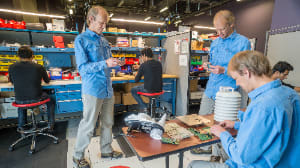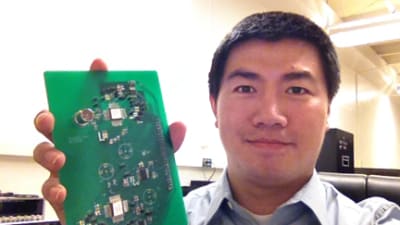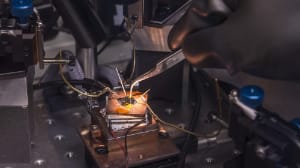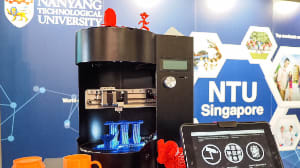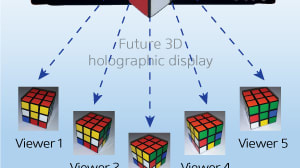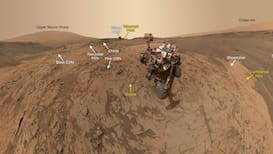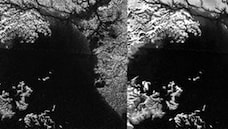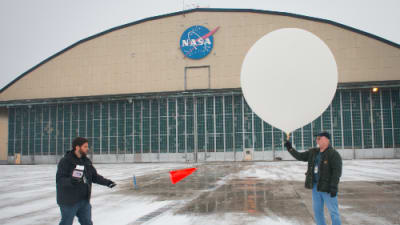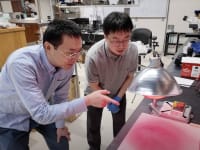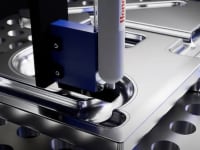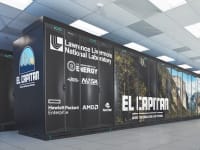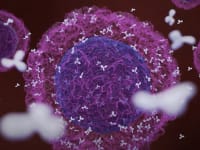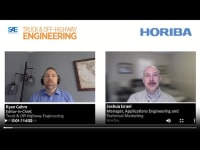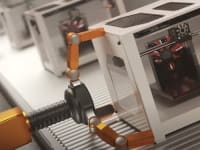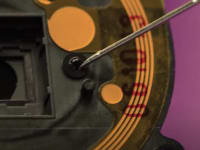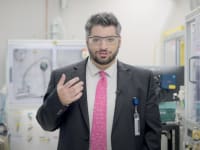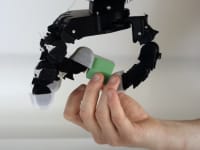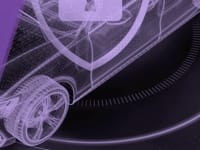61
12,105,170,194,926
-1
2550
30
INSIDER: Robotics, Automation & Control
Robotic Vehicle Explores Depths of Antarctica
A robotic vehicle developed by Georgia Institute of Technology scientists and engineers recently dove to depths never before visited under Antarctica’s Ross Ice Shelf.
INSIDER: Test & Measurement
A new method of continuously monitoring the status of machinery is a mobile tablet-based system that supplies information on the operational state of industrial machinery and plant equipment,...
INSIDER: Semiconductors & ICs
As urban populations increase, so too does the complexity involved in maintaining basic services like clean water and emergency services. But one of the biggest barriers to making cities...
INSIDER: Medical
Wei Tang, assistant professor of electrical and computer engineering at New Mexico State University, is taking a cue from nature to devise the next generation of integrated, low-power, wearable...
Question of the Week: Energy
Will hydrogen fuel cell vehicles ever achieve widespread use?
This week's Question: Today's INSIDER story highlighted a discovery in alternative energy production that may provide a breakthrough for hydrogen-fueled vehicles. According to researcher Joe Rollin, the technology "has the potential to enable the widespread use of hydrogen fuel cell...
INSIDER: Aerospace
New Materials Enable Flapping Robotic Wings
Dielectric elastomers, popular materials in robotic hands, soft robots, tunable lenses, and pneumatic valves, may now be used to create flapping robotic wings.
INSIDER: Defense
Engineers at The University of Texas at Dallas have created semiconductor technology that could make night vision and thermal imaging affordable for everyday use.
INSIDER: Defense
The best hope for cheap, super-efficient solar power is a remarkable family of crystalline materials called hybrid perovskites. In just five years of development, hybrid perovskite...
Question of the Week
Will airships be the future of "green" aviation?
A group of academics from the University of Lincoln, UK, believe airships may be the 'green' answer to the future growth of aviation . The Multibody Advanced Airship for Transport (MAAT) project, made up of eight nations and led by the Universita di Modena e Reggio Emilia in Italy, is working to...
INSIDER: Electronics & Computers
Researchers Develop Hybrid Supercapacitors
UCLA researchers have successfully combined two nanomaterials to create a new energy storage medium that combines the best qualities of batteries and supercapacitors.
INSIDER: Materials
Sound waves passing through the air, objects that break a body of water and cause ripples, or shockwaves from earthquakes all are considered “elastic” waves. These waves travel at the surface...
INSIDER: Motion Control
NASA’s Leading Edge Asynchronous Propeller Technology (LEAPTech) project will test the premise that tighter propulsion-airframe integration, made possible with electric power, will deliver...
INSIDER: Software
Large wind turbine blades disturb the wind, creating a wake behind them and reducing the energy harvest of any downwind turbines. A turbine sitting in the slipstream of another can lose...
INSIDER: Robotics, Automation & Control
NASA has tested the attitude control motor of the Orion Launch Abort System (LAS) to prove that its material can survive not only the intense temperatures, pressures, noise, and...
INSIDER: Materials
Researchers Turn Packing Peanuts into Battery Parts
While setting up their new lab, Purdue University researchers ended up with piles of packing peanuts. Professor Vilas Pol suggested an environmentally friendly way to reuse the waste.
INSIDER: Communications
Michigan State University researchers have developed a technology that allows sensing, communication, and diagnostic computing — all within the building material of a structure.
Question of the Week
Will self-driving cars be ready for the road this summer?
This week's Question: Last week, Elon Musk, chief executive of Tesla, said that the electric car maker would introduce autonomous technology, an autopilot mode, by this summer; the technology will allow drivers to have their vehicles take control on major roads and highways. The CEO also...
INSIDER: Semiconductors & ICs
A research team led by the University of Chicago has demonstrated how semiconductors can be soldered and still deliver good electronic performance. The team developed...
INSIDER: Automotive
People have been making rubber products, from elastic bands to tires, for centuries, but a key step in this process has remained a mystery. Scientists from the Kyoto Institute...
INSIDER: Imaging
Nanyang Technological University’s (NTU) start-up Blacksmith Group launched a compact 3D printer that can also scan items into digitized models. Named the Blacksmith Genesis, this...
INSIDER: Materials
Chameleon-Like Material Changes Color on Demand
Researchers from the University of California at Berkeley have created a thin, chameleon-like material that can be made to change color — on demand — by applying a minute amount of force.
News: Medical
The 3D effect produced by stereoscopic glasses used to watch movies cannot provide perfect depth cues. Furthermore, it is not possible to move one’s head and observe that objects...
News: Robotics, Automation & Control
A sweeping view of the "Pahrump Hills" outcrop on Mars, where NASA's Curiosity rover has been working for five months, surrounds the rover in Curiosity's latest self-portrait. The selfie is assembled from...
News: Photonics/Optics
A new software system developed at the University of Michigan uses video game technology to help solve one of the most daunting hurdles facing self-driving and automated cars: the high...
News: RF & Microwave Electronics
During 10 years of discovery, NASA's Cassini spacecraft has pulled back the smoggy veil that obscures the surface of Titan, Saturn's largest moon. Thanks to a recently developed...
Question of the Week
Will 2015 be the year that virtual reality goes mainstream?
This week's Question: New virtual reality technologies were revealed at this month's Game Developers Conference in San Francisco, including the HTC Vive from game developer Valve Corporation and smartphone maker HTC. Vive uses lasers, sensors, and controllers to track motion in 3D space....
INSIDER: Mechanical & Fluid Systems
BeeRotor Robot Equipped with Insect-Like Eye
Biorobotics researchers at the Institut des Sciences du Mouvement (Aix Marseille University) have developed the BeeRotor, a tethered flying robot. The robot adjusts its speed and follows terrain without an accelerometer or the measurement of altitude.
INSIDER: Energy
Energy-Harvesting Method Shows Promise for Mars Power Stations
Northumbria and Edinburgh Universities researchers have developed an innovative, new technique to harvest energy from carbon dioxide. The method may enable the creation of future power stations on the surface of Mars.The research proposes a new kind of engine for producing energy based...
INSIDER: Test & Measurement
When ice accumulates on the surface of an aircraft during flight, it distorts the smooth flow of air necessary to stay aloft. The result is a reduction in lift, which can lead to...
Top Stories
Blog: Manufacturing & Prototyping
2025 Holiday Gift Guide for Engineers: Tech, Tools, and Gadgets
INSIDER: Research Lab
Scientists Create Superconducting Semiconductor Material
Blog: Software
Quiz: Materials
Blog: Aerospace
Tech Briefs Wrapped 2025: Top 10 Technology Stories
Blog: Manufacturing & Prototyping
Webcasts
 Upcoming Webinars: AR/AI
Upcoming Webinars: AR/AI
The Real Impact of AR and AI in the Industrial Equipment Industry
 Upcoming Webinars: Motion Control
Upcoming Webinars: Motion Control
Next-Generation Linear and Rotary Stages: When Ultra Precision...
 Upcoming Webinars: Energy
Upcoming Webinars: Energy
Hydrogen Engines Are Heating Up for Heavy Duty
 Podcasts: Medical
Podcasts: Medical
How Wearables Are Enhancing Smart Drug Delivery
 Podcasts: Power
Podcasts: Power
SAE Automotive Podcast: Solid-State Batteries



